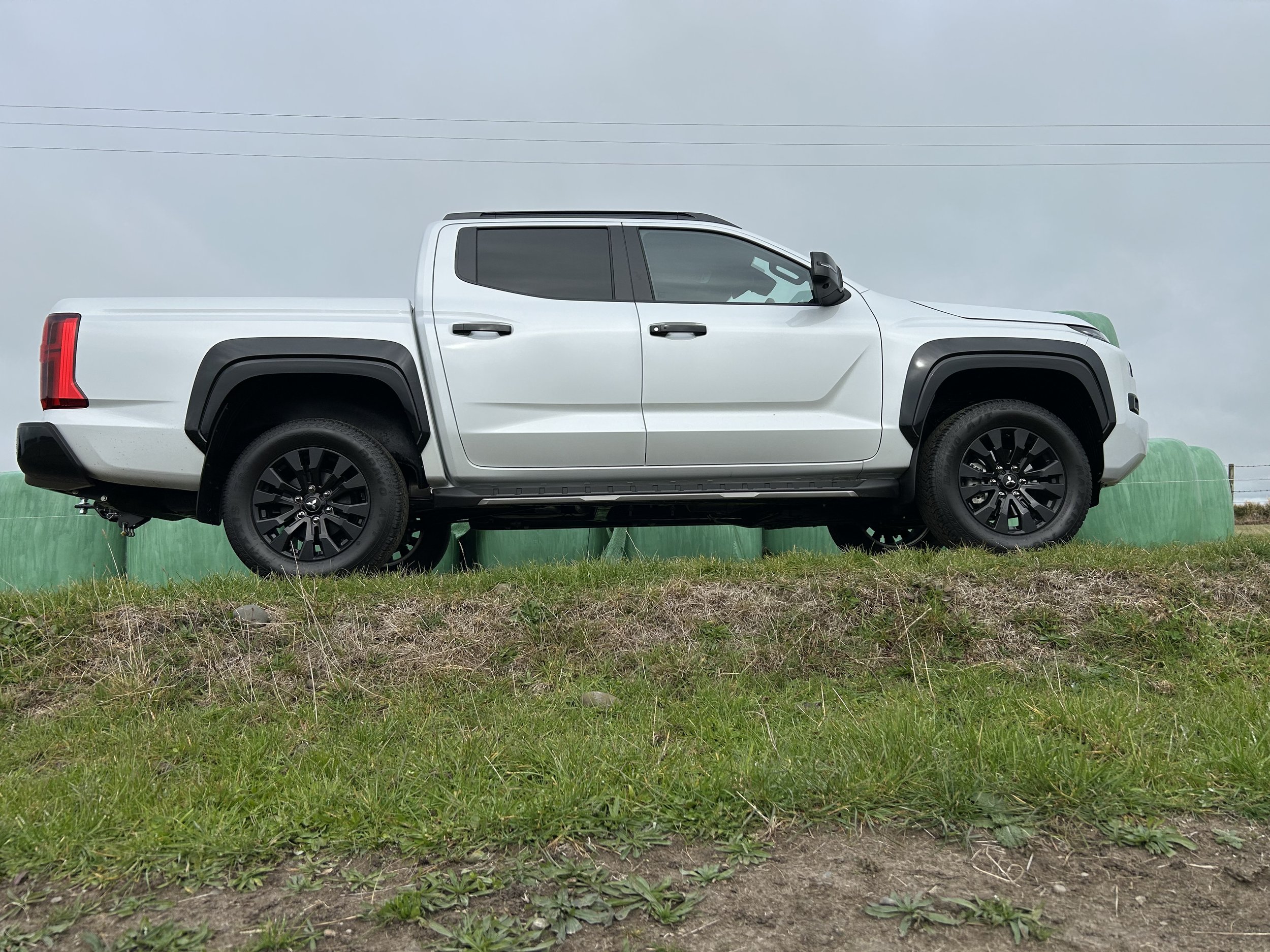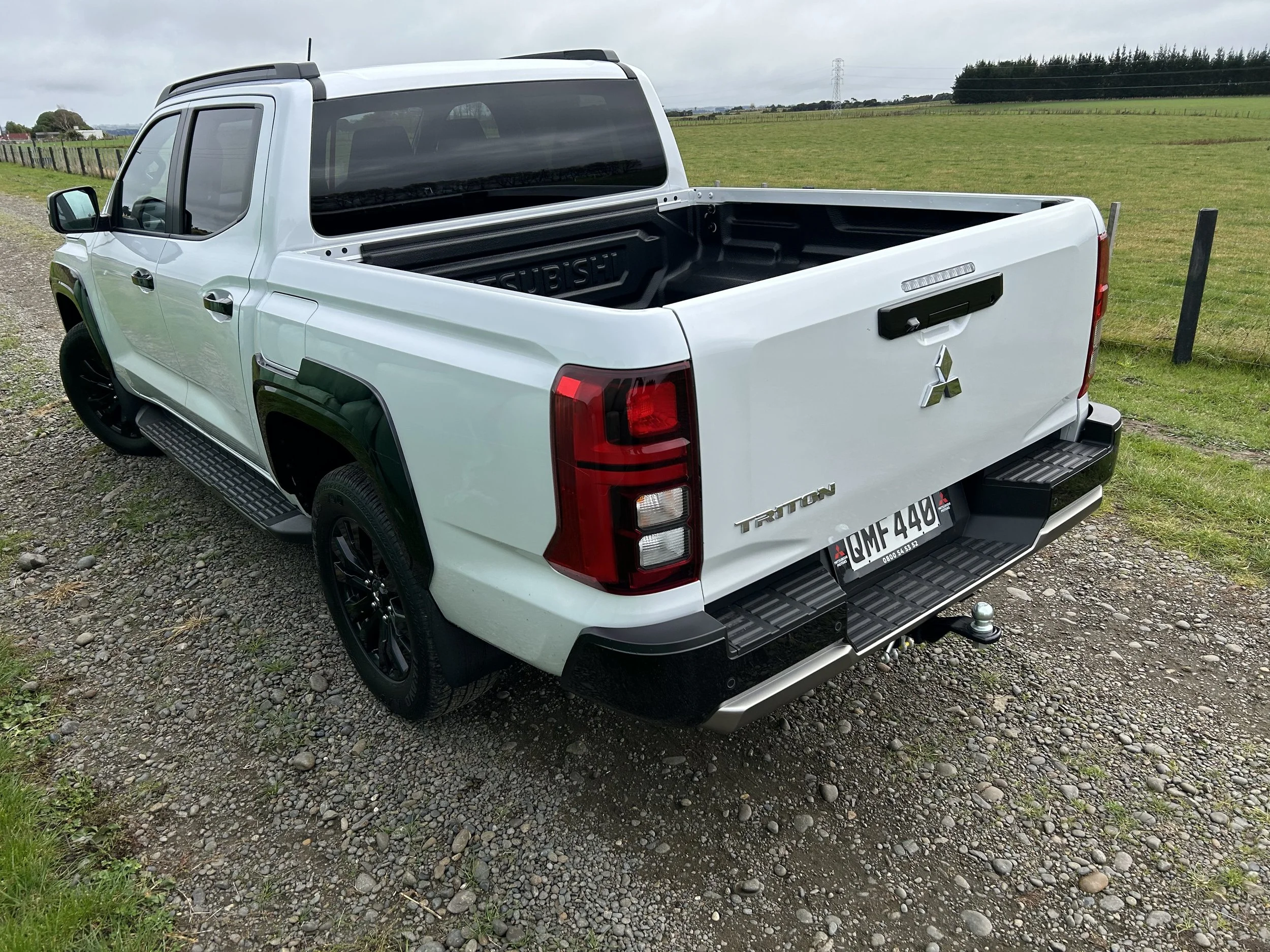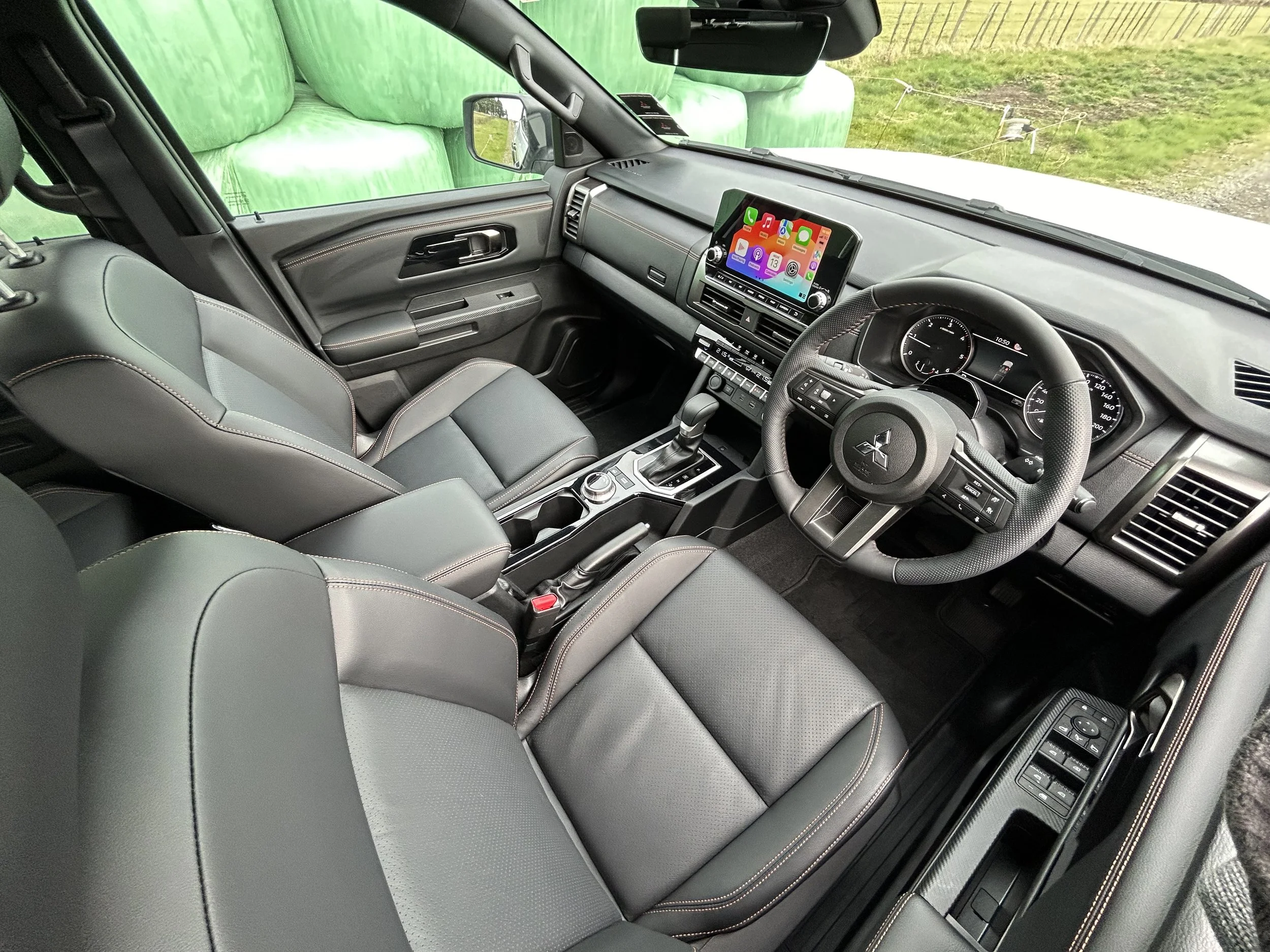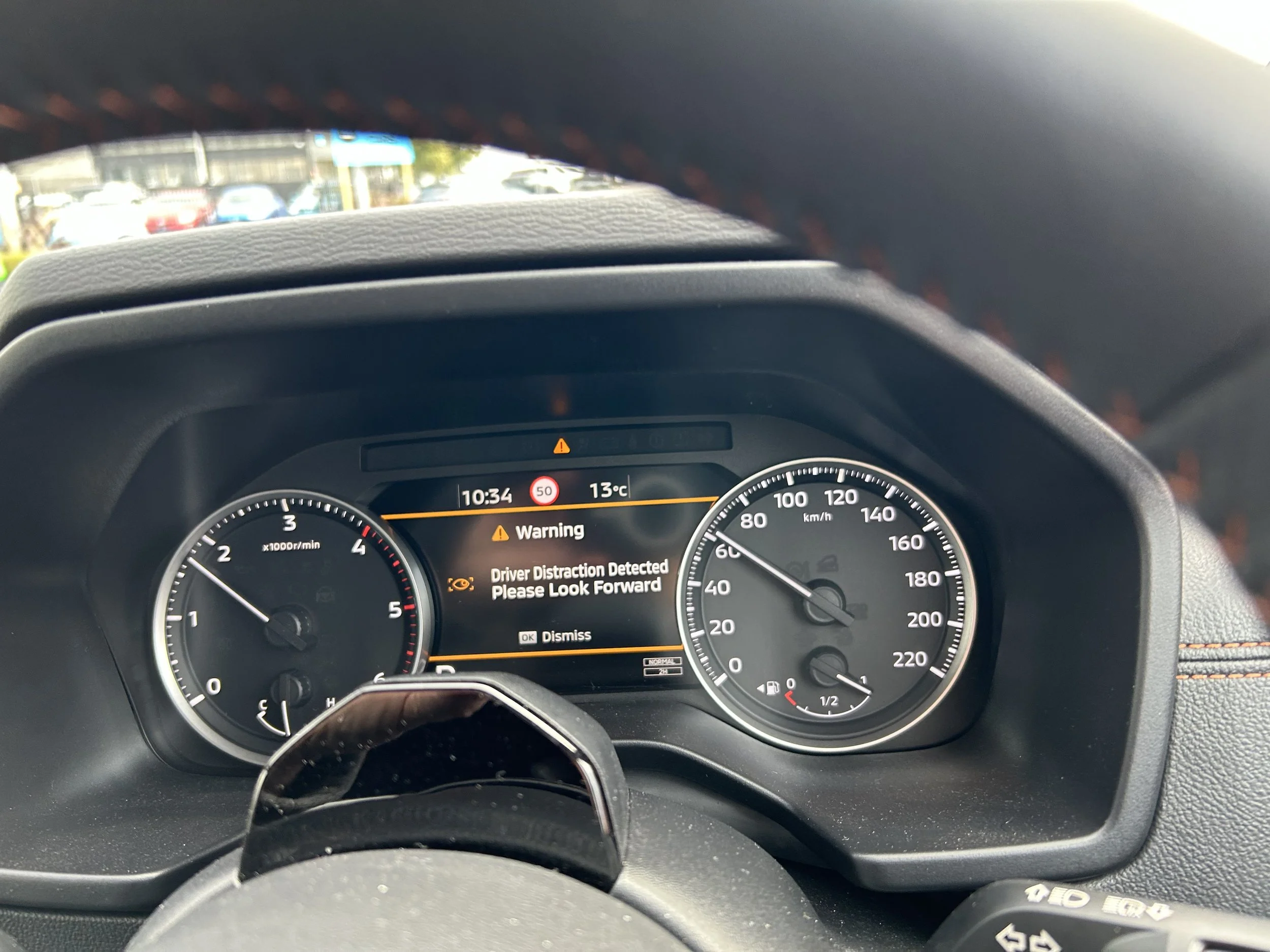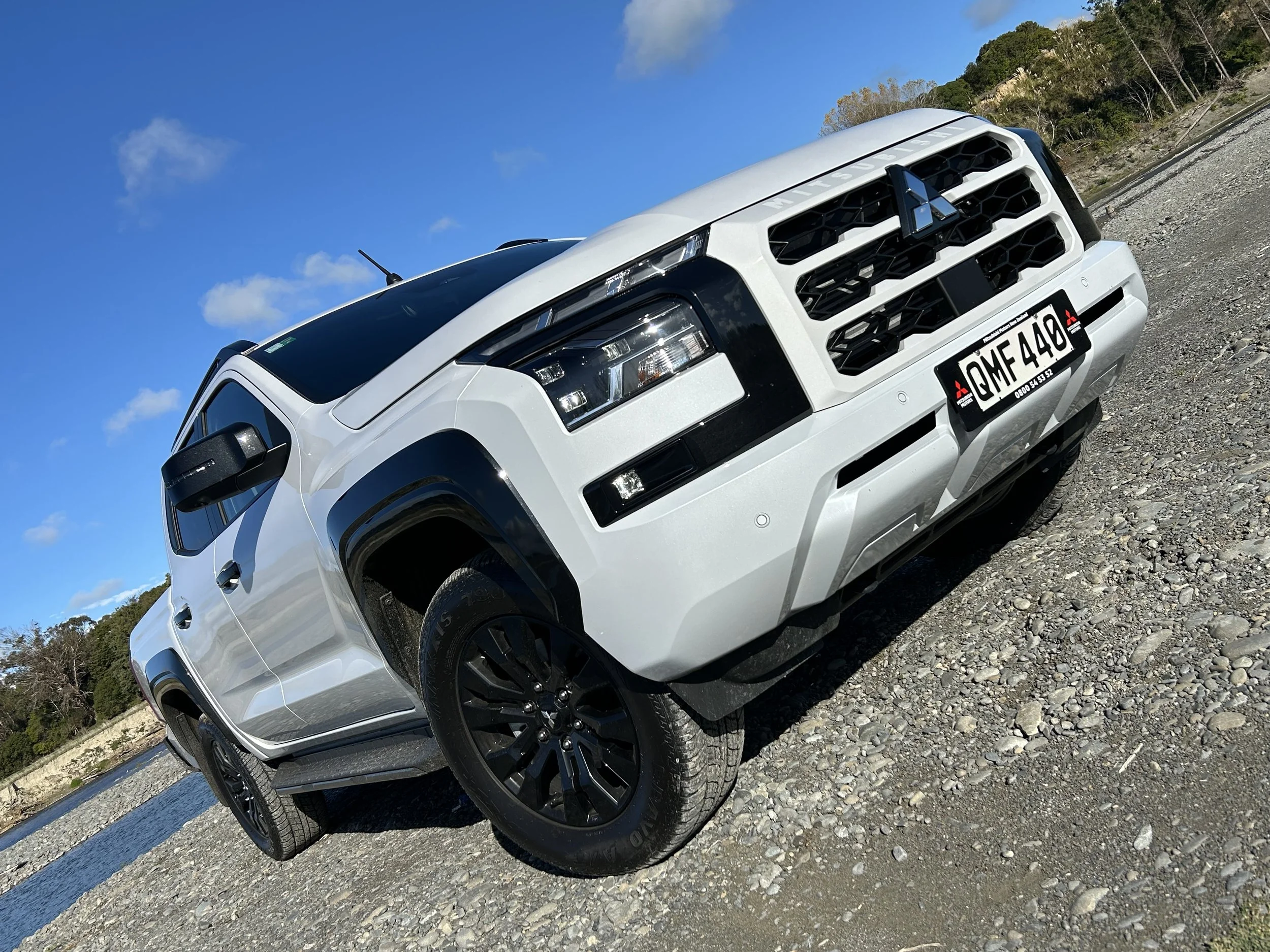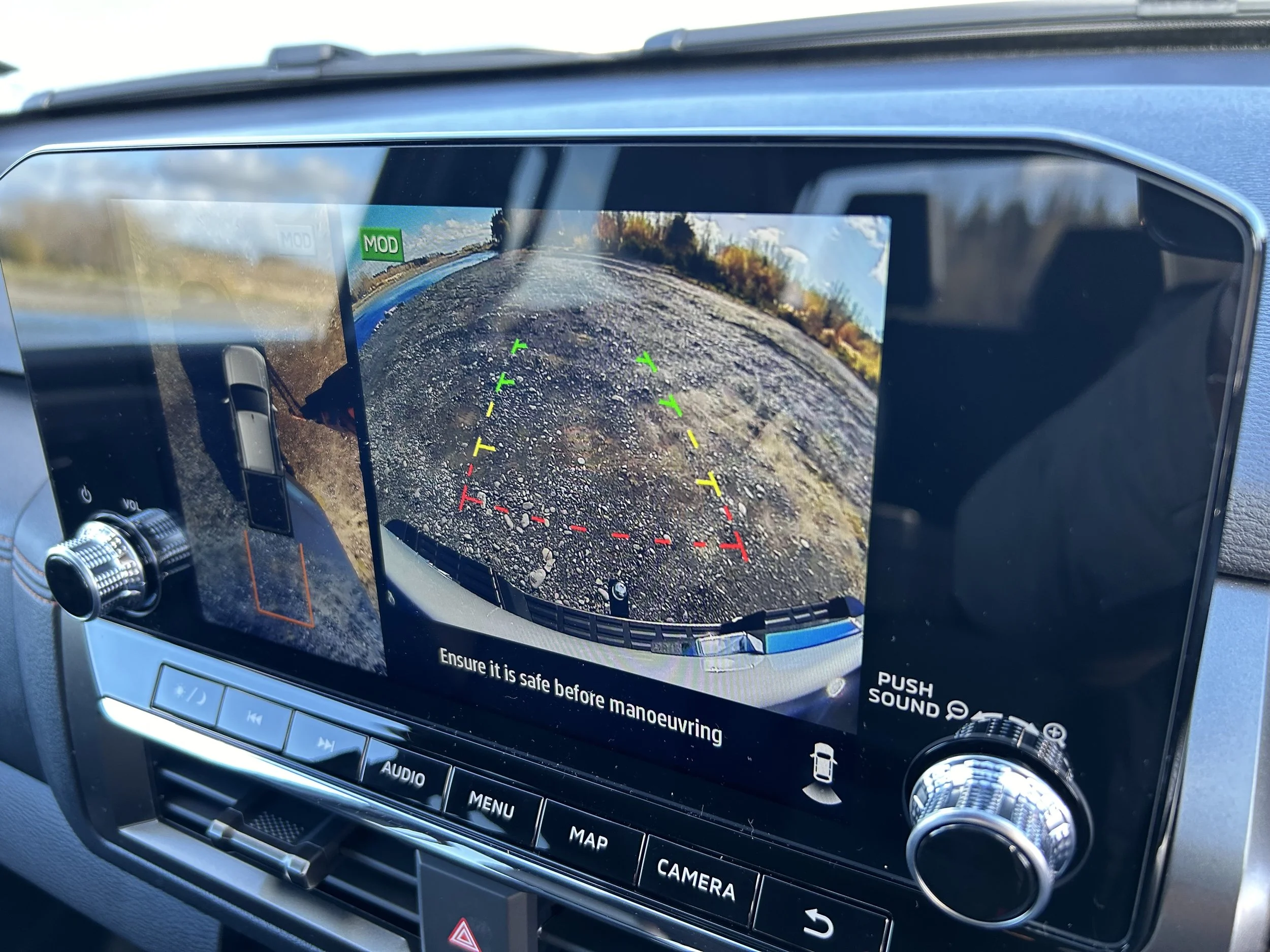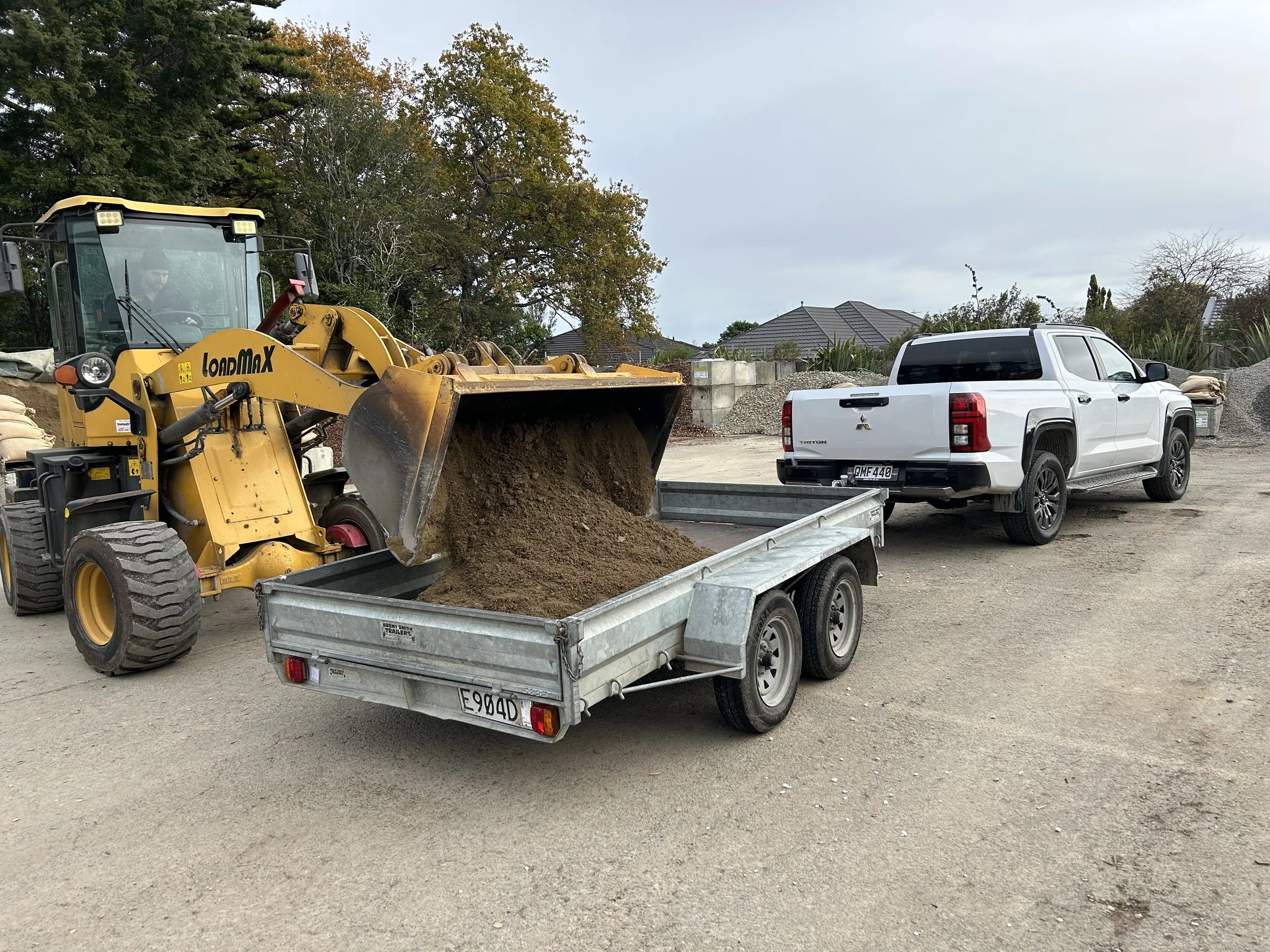Mitsubishi Triton VRX road test review: Finessing the familiar
/The top edition of this workhorse is better sorted to be a more adventurous family friend. Read this special edition report featuring an expert video review by new sign-on Callum Crawley.
Price: $59,990 (time of test special sticker).
Powertrain: 2.4-litre biturbo diesel, 150kW/470Nm, six-speed automatic, full time 4wd.
How big: 5305mm long, 1815mm wide, 1795mm wheelbase.
We like: Improved drivetrain; better ride; comfort features; sharp pricing.
Not so much: Irksome driver monitoring; still not most handsome look; weedy tie downs and heavy tailgate; no deck cover even for VRX.
ONE tonne utes are nowadays far from rudimentary - that’s the inevitable from their transformation from trayed tools in family-friendly car alternates - yet the sector in which they sell is simple-as to explain.
It goes like this. Ford Ranger dominates. Toyota Hilux challenges, but in almost every monthly count-up has to settle for second. And everything else takes what’s left.
Top of the ‘everything else’ has historically always been this one; Mitsubishi Triton.
Can the just renewed family that recently arrived do better?
This week’s test delivers a new dimension to answering that one. Ancillary to this written appraisal of the top-flight VRX four-by-four comes a video test, focusing on the core toil-sided attributes and introducing new involver Callum Crawley.
Time on and around the family farm gave good insight about the model’s toil configurations to my mate, who in addition to being an off-roading hand can be found instructing in advanced driving technique for Downforce - he won their attention from being an accomplished, championship-winner motor racer; an an pretty decent videographer.
With the working component ticked off, this written component lends thought about how it settles into broader activity; on seal, highway and urban, carting passengers, picking up coffee. All other other stuff that, while not really part of the image, is just as imperative to ute acceptability.
Cut to the chase: We’re impressed. There’s room for improvement - Callum’s spot on, for one, about the overly-intrusive nature of the driver monitoring (and its apparent dislike of sunglasses) - but there’s also a lot to suggest Mitsubishi Motors New Zealand has solid reason for holding optimism.
It’s talented, better sorted to compete with the historic big guns but also better prepared to defend against the rapidly improving offerings from China and impending rivals out of South Korea.
What’ll surely raise its imprint is that it lands in strength and with a canny strategy. A broad model choice and determination to sell more kinds at lower prices than the opposition has to be noticed.
Something for everyone? In proffering in 16 derivatives, eight in entry GLX configuration, four apiece in GLX-R and flagship VRX, all with a 2.4-litre four-cylinder diesel engine with twin turbos, producing 150kW and 470Nm - increases of 17kW and 40Nm on the current model - it’s hard to imagine any customer type conforming to usual commitments being left out.
The GLX-R and VRX choices offer rear-drive in two forms that site below two four-wheel-drives; in GLX, there are three rear drive derivatives and the remainder in four-wheel-drive. All feature the make’s long-serving six-speed automatic transmission.
All variants appear to be rated to tow up to 3500kg braked and the 4WD models continue with the make’s ‘Super Select II’ system that allows all-paw on all road surfaces; those editions also have a manual rear diff lock.
The money? Argument that Triton is better positioned when not directly head-butting the sector giants is not invalid. I;t still doesn’t feel quite the same in some ways as a Rangerlux and attention to final detailing isn’t quite as comprehensive: Those basic tie down anchors and the tailgate not locking with central locking are two irks.
However when, having undercut with recommended retails, spanning from $44,990 up to $69,990, MMNZ nonetheless releases some, including the test edition, with special early bird stickers for double cab wellsides adding additional fruity savings? That’s a real gauntlet cast.
Typecasting utes can be a touchy business; but as much as they are tuned to put work before play, we all know why the too plush for mush flagship types with, in this case, leather-included luxury sell strongly. As with its competitors, VXR support can rest on it not just being the most comfortably-appointed but also the one with the strongest safety set, an element that always sells well when family usage involves.
Triton achieving a five star from the nationally-accredited crash test agency is a good thing, given Australasian New Car Assessment Programme was applying a fresh, more stringent criteria when testing occurred.
Plaudits for scoring highly in not just the physical crash tests but also achieving strong results for both front passages and child dummies in the second row hold value. The Autonomous Emergency Braking (AEB) system being effective in detecting other vehicles, pedestrians, cyclists and motorcyclists is also a credit; that it doesn’t have the capability of more advanced AEB systems to avoid a crash at a T-bone intersection or a head-on collision is something for the maker to work on. Still, safety sells and Triton stands tall.
The body being lighter thanks to the use of new high-tensile steel and also claiming a stiffer frame; bending rigidity improving by 40 percent, torsional rigidity by 60 percent, has been beneficial, for sure.
ANCAP crediting elements of the model’s design as also being helpful to the examination outcomes is interesting, because if anything it has now steered back toward a more orthodox styling that previous editions.
The vehicle as a whole has squared off noticeably, but it’s that big bluff frontage and curtailing a design signature of the two previous generations - the weirdly curved rear door - that especially won’t go unwelcome to those with an eye for a good-looking truck. It’s also the better for having less brightwork, too.
The interior revision is just as wholesale. It’s a thoroughly modernised interior that means it's every bit as good inside as the latest wave of SUVs and there's a high level of standard equipment.
The most obvious elemental change is the switch to a similar dashboard to that in the Outlander sports utility.
All variants get the same 9.0-inch infotainment display, which is a telltale to this rig being the foundation for the next Nissan Navar, as part of their product co-evelopment strategy.
It’s the first Mitsubishi to be a Nissan, and though the three diamond marque is leading the project - so, a reversal of his things went with the Outlander - you’ll also notice the same screen is in the X-Trail. (pub quiz factoid: Triton has a Nissan-style key).
That display is a good thing, by the way. The resolution is sharp, the operability sensible and its quick-witted: Apple CarPlay enables through both wireless and wired connections (Android just the latter).
Native navigation is standard. Along with a regular analogue speedometer and tachometer, you also have a 7.0-inch digital multifunction display in front of the driver for the regular range of driving and trip information. That one can get a bit busy, but nothing confuses.
The other element is the driver distraction system, in front of the driver and sitting on the steering column. Callum goes into why that falls short. I appreciate that it encourages sensible steering wheel use; anyone who likes to hold their hands high on the rim will cop an earful if its ‘vision’ becomes obstructed. But for all the good it intends, it’s a feature you’ll be annoyed by. Which is self-defeating to its provision.
Look around and you’ll see it’s just more car-like in the detailing: USB-C as well as USB-A power up front, a wireless charging pad, pop-out cupholders on the dashboard and second glovebox in front of the passenger to enhance the usual everyday storage options. Shiny piano black is a fancy-schmantzy for a ute that could hurt; those finishes are easily scratched. Prevalence of some cheap plastics still also annoys. Other competitors are still classier inside.
The second row benefits from the increased external dimensions; it’s not RAM or Silverado, and ultimately taller types will still prefer the front row, but there is a bit more space and comfort overall. I’d suggest it's better suited to seating two rather than three in the rear.
One point of conversation of Mitsubishi delivering a roof-mounted tire recirculator rather than the more typical console-mounted air vents. Logically, it gets the air stream closer to the head area; but it also smacks as being a bit of a work-around.
While this edition is longer than the current edition and 50mm wider, it still doesn’t feel overly brawny around town. The improvement to its driving demeanour comes from the wheelbase having been stretched by 130mm; that in itself is a tangible reason why the unladen ride is less jaunty and the vehicle has a more confident cornering feel.
VRX has a softer setting than lesser models, apparently in deference to occupant appeal in everyday driving. To me, it’s as handy a steer as Hilux. It handles pretty capably, too, with decent control over body roll, steering that’s comparatively quick and weighty and the off-road tyres detract surprisingly little from the overall comfort and road holding. The driving position has good adjustment and the view around the vehicle is pretty clear in all directions. But is the best there is? I still hold Ranger is the barometer model. Mitsubishi has improved, but blue still beats red.
On seal, there are the usual safety systems in place to assist, including road sign recognition, so you always know the speed limit where you are driving. Stability control and traction control seem well calibrated. A trailer brake function of the kind Ford puts into Ranger to make towing even more manageable would have been great.
The off-roading chops are Callum’s domain, but Mitsubishi put the Triton through a rigorous development programme including extenstive off-road driving in the Australian Outback, all to ensure that it could handle almost anything its owners would put it through. It’s been thoroughly reinforced and strengthened to cope with abuse and feels robust and tough.
On output, the engine has closed in on the 2.0-litre Ford Ranger and 2.8-litre Toyota HiLux in terms of outputs, and you can sense Navara fans will enjoy it. It’s not the most refined four-pot diesel at times, but does deliver a nice, progressive feel throughout the rev range.
The dual turbo set-up is typical is having a small unit to get it stepping off nicely then a larger one taking over to maintain strength at higher running speeds.
I couldn’t discern any obvious stepping point or flat spot between them; the low-down response seems very smooth. Where it settles in very nicely is in the circa-2000rpm mid-range; peak torque on tap from a healthy 1500rpm is also a welcome involvement. It was effortless in towing a big trailer-load of fill; a journey which included a steep climb.
Mitsubishi sticking with a six-speed transmission is retrograde when others are going to eight and 10 speeds; yes the more cogs, the busier a drivetrain can be, but there are benefits to operability and economy.
Mitsubishi does have an eight-speed, in Pajero Sport behind the 2.4-litre engine. They reportedly chose not to use it because of costs and complexity.
I don’t mind the six-speed, but it’s not on my ‘things to love’ list, either. Fuel burn of 10.7 litres per 100km for the week disappointed when 8.8L/100km is cited as best potential.
More appreciated for my kind of semi-rural usage is the continuing support for Super Select II, which combines a gear-based Torsen centre differential that allows for four driven wheels on-road but can also be locked for proper four-wheel driving.
It can be run in rear-wheel drive only to reduce drivetrain losses, but takes the second-guessing out of decision-making. Ranger (sand VW Amarok) have a similar system, save that they use electronically controlled clutch packs to vary the torque split and locking functionality.
Mitsubishi’s is simple, but highly effective, not least if you are an occasional off-roader who doesn’t understand how to extract the best from a four-wheel-drive system. To a layman, the Mitsi set-up removes a lot of mystery in respect to how to tailor it for tackling trickier terrain.
Utes tend to rely on a mixture of abilities to best meet the all-rounder expectation of both private and commercial users; the Triton looks the business and delivers a well-judged balance between on-road comfort and off-roading ability, while offering improvement to interior roominess and equipment levels.
The next step for this model would appear to be a plug-in hybrid, rather than full electric. That’ll be an interesting development, one that ties it more fully to the brand’s top choice passenger product.

